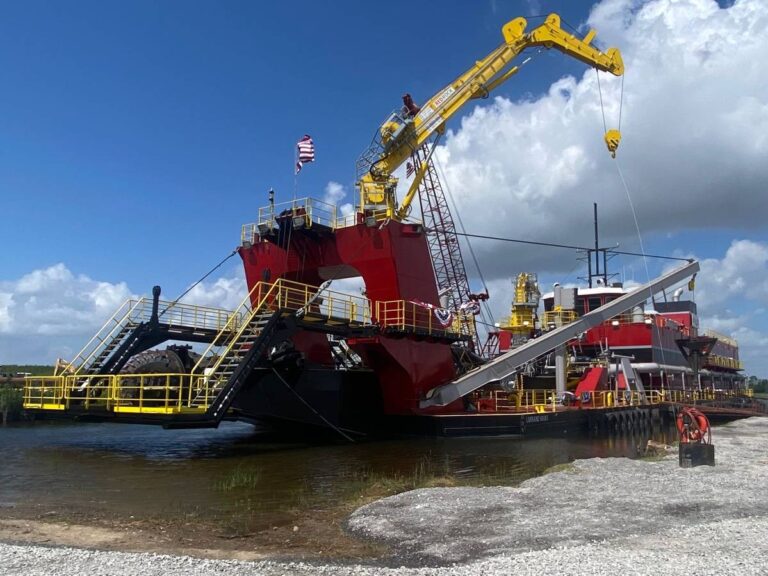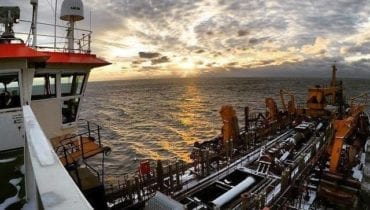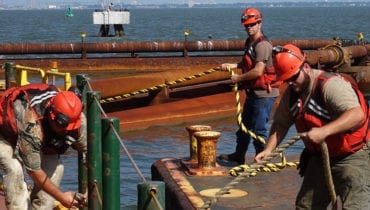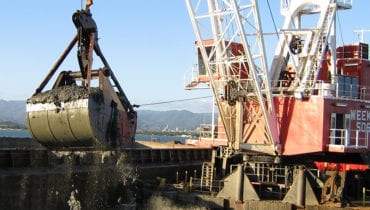The U.S. dredging industry is ‘fiercely competitive’ and growing according to The Mike Hooks Report, detailing the latest trends in the U.S. federal dredging market.
Every year, the U.S. Army Corps of Engineers partners with American Maritime to identify and dredge projects across the country along the nation’s inland waterways, coastal channels, ports and harbors. According to the USACE, dredgers have moved more than 200 million cubic meters of material from federal projects.
This enables America’s ports and rivers to handle more traffic, including containerships, tankers, towboats and other critical vessels. The dredged material is also used for beneficial purposes, with the USACE using at least some dredged material from over half of all projects in 2022 to support environmental restoration efforts and other initiatives.

To do this important work, dredging companies have to bid against each other for contracts to deliver their services efficiently on behalf of the American people.
“The Mike Hooks Report: An Analysis of the FY22 U.S. Federal Dredging Market” authored by Michael Gerhardt, Senior Director of Government Affairs at Mike Hooks, LLC, gives an overview of the U.S. dredging industry and how much American Maritime saves taxpayers.
In fiscal year 2022, a total of fifty-two Jones Act dredging companies were awarded federal dredging contracts. The Mike Hooks Report also shows that many of these companies have been small American businesses, over the past ten years. This indicates a thriving and competitive marketplace where numerous companies vie for government projects.
What’s particularly striking is that, for 72% of the contracts, the private sector industry’s winning bid came in lower than the Independent Government Estimate, saving taxpayers millions.
The cumulative result of this fierce competition was substantial, with the industry saving the federal government and, by extension, American taxpayers a staggering $670 million in fiscal year 2022 alone.
Dredging Contractors of America CEO & Executive Director William Doyle attributes these low costs to the number of companies engaged in the bidding.
“These companies fiercely compete for each job. They are also very successful entrepreneurs. Each company has a team of innovators, engineers, technicians and professionals who wake up every day trying to find a better way to do a job—get more out of a piece of machinery or designing a new tool in-house that will give them a competitive advantage.”
“Dredging awards are public – so the losers on a particular project know what that price point is – and next time around they’ll be ready,” said Doyle.
In total fifty-nine projects came in under budget by more than 10% than estimated, with 27 projects costing more than 25% less than expected and 15 projects achieving budget reductions of over 40%. These statistics unequivocally illustrate the cost-effective nature of the U.S. dredging industry, which is a critical component of the 650,000 men and women of American maritime.
The use of dredged material to support the marine environment has become a nationwide trend.
“It really quite simple—instead of dumping excavated dredged material at sea, we are now more and more using that material for environmental purposes such as rebuilding the islands in the Chesapeake Bay, layering as coastal restoration material in the Carolinas, and reusing for dike rehabilitation along the Mississippi River and the Gulf Coast,” said Doyle.
In particular, dredging has gained renewed importance on the Gulf Coast, where states like Louisiana benefit the most from the Jones Act’s economic impact.
“My office has made dredging and proper maintenance of water management systems a top infrastructure priority as ports and waterways are vital economic engines that serve our waterways,” said Congressman Clay Higgins of Louisiana’s 3rd Congressional District in a Maritime Day address. “We’ll continue to advocate for the needs of our ports and maritime assets by working with industry, state, and federal partners to improve dredging efforts and grow commercial activity for the region.”
American Maritime is helping with the State of Louisiana’s marsh creation project at Lake Borgne by re-using beneficial dredged materials to rebuild fragile marshes along the coast. This project, led by Mike Hooks, LLC, will help protect local communities from storm surges.
Thanks to the steady contracts offered for these projects, America’s dredgers have engaged in a $2.5 billion recapitalization spree with newly built dredges already built and on the way, expanding the Jones Act fleet.
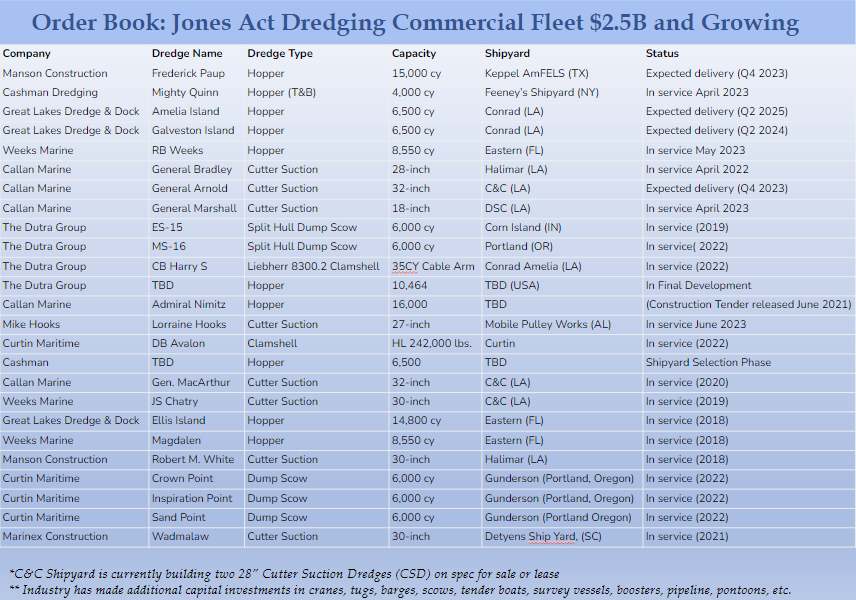
The report’s findings reflect a dynamic and competitive U.S. dredging industry that continues to play a vital role in infrastructure development and environmental restoration while achieving substantial cost savings for the American taxpayer. With a surge in new dredge construction, this sector appears poised for further growth and impact in the coming years, thanks to the Jones Act.
“We’re there, on the job and getting it done—dredging day and night, rain or shine, 24/7 365,” said Doyle.
Originally featured on American Maritime Voices




